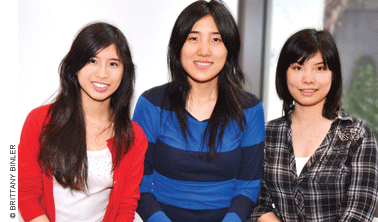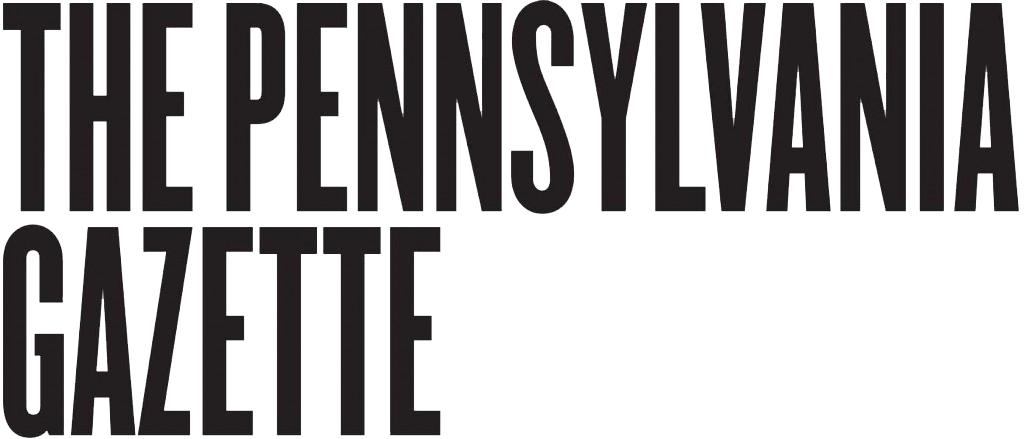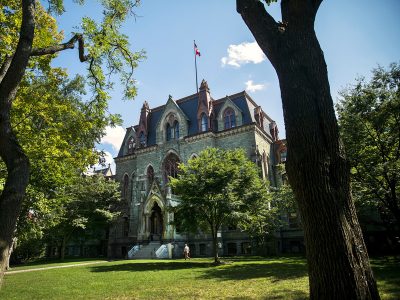
On the third weekend of September, a group of University of Michigan undergrads packed into three crowded vans and drove 11 hours from Ann Arbor to Philadelphia, stopping to spraypaint their logo on a quad at rival Ohio State under the cover of darkness. These weren’t a group of athletes gearing up for a non-conference game against the Quakers, though. They were hackers.
The biannual PennApps competition, which only a couple of years ago consisted almost entirely of a few Penn students, is quickly turning into a continent-spanning affair. Held in Ware College House in the Quad, this fall’s event drew 320 participants from schools including Harvard, MIT, Duke, and McGill. It also boasted 43 sponsors, like Facebook, Google, and Microsoft.
“It was crazy to get like 200 signups in the first hour [of applications opening up],” said PennApps organizer Pulak Mittal, a junior in Wharton and Penn Engineering’s Jerome Fisher Program in Management and Technology. “We were all freaking out at how many people were interested.”
For those unfamiliar with computer science lingo, a hackathon is actually less edgy than it might sound. Hackathons are contests among computer programmers to see who can design the best application in a specified amount of time. Most competitions last 24 hours, but PennApps gives teams of up to four members 48 hours to turn a fresh idea into a fully fledged program. Basically, that means a throng of Zuckerberg-esque prodigies do nothing for two days but eat and code—with maybe the occasional nap if there’s time.
The stakes are high. Performing well at a hackathon can mean landing a dream internship for some students, not to mention a few thousand dollars in cash. This year’s grand prize was $4,000, a trip to Google NYC to demo the winning app, and automatic entry into the Facebook college hackathon and the Greylock Hackfest—both prestigious hacking contests. In total, with the help of its sponsors, PennApps distributed more than $12,000 in prizes.
After 48 hours of coding fueled by free energy drinks, each group delivered a presentation in front of a packed crowd in Houston Hall’s Hall of Flags. While many in the room were clearly sleep-deprived, the room bubbled with enthusiasm.
The finished programs varied widely. A group from Carnegie Mellon University took one of the lesser prizes for “PayTango,” a mobile app that scans a user’s fingerprints on an iPad to allow him or her to select a credit card to pay with. On the other end of the spectrum, one group from Michigan designed an app called JIMbo(t)—“your neighborhood friendly bartending robot”—which mixed drinks by means of some elaborate machinery attached to a computer. (Alas, this device couldn’t overcome the twin handicaps of “wireless issues” and the absence of alcohol to win the judges’ favor.)
The teams from visiting schools offered stiff competition, but the top prize went to a group of women from Penn. Jocelin Lee, Ana Mei, and Angela Yu—all juniors in SEAS—captured the grand prize with “Java Auto Music,” an app that transcribes live music into sheet music.
“We were in complete shock,” Lee said. “We just all grabbed our faces.”
After failing to finish at last year’s competition, the threesome was mainly hoping just to complete their app on time.
PennApps has come a long way. In fact, the first contest by that name took place during the fall of 2009. It lasted for several weeks, there were no corporate sponsors, and only three teams finished. The next year, Alexey Komissarouk, now a senior in SEAS, revamped PennApps as a proper hackathon with the same rules that govern today’s contest.
“I wanted to be able to come in as a freshman in [computer science] and to make it really clear how to get involved in making stuff with code, how to learn the skills required and get in touch with cool start-ups and companies,” Komissarouk said.
PennApps has grown to be the largest student-run hackathon in the country.
Organizers are hoping to continue to expand the competition and attract more students, especially from the West Coast.
“The kids I talked to from Michigan said we can expect like 40 kids next time,” Mittal said. “That’s pretty sweet.”
—Matt Fernandez C ’14




